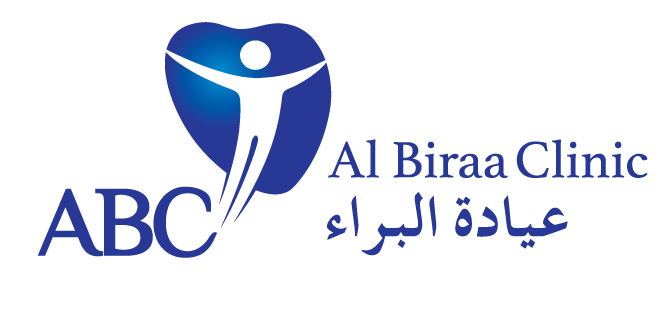Sciatica Treatment
Sciatica is nerve pain from an injury or irritation to the sciatic nerve, which arises in your buttock/gluteal area. The sciatic nerve is the longest and thickest (almost finger-width) nerve in the body. It’s actually made up of five nerve roots: two from the lower back body area called the lumbar spine and three from the final section of the spine called the sacrum. The five nerve roots come together to form a right and left sciatic nerve. On each side of your body, one sciatic nerve runs through your hips, buttocks and down a leg, ending just below the knee. The sciatic nerve then branches into other nerves, which continue down your leg and into your foot and toes.
Sciatica refers to pain that radiates along the path of the sciatic nerve, a huge nerve extending from the lower back and branches down the back of each leg. Typically sciatica affects only the side of the lower body but depending on where the sciatic nerve is affected, the pain can also increase down to the foot.
Pain that goes from your lower back through your buttock and down your leg-foot can be sciatica. Nerve pain related to a compression of the sciatic nerve usually affects only one side of your body, but can also radiate to both legs (lower limbs).
A slipped disc or herniated disc is a condition when a tender cushion (cartilage) of tissue between the bones in your spine pushes out. This is extremely painful if it presses on nerves, especially the sciatic nerve in the low back area.
The cause is the usual age-related wear and tear of the discs. Spinal discs lose some water as your age increases which makes them more prone to tear or rupture due to a strain. This can lead to pain, numbness and sometimes weakness in the leg.
Main risk factors for sciatica
Main risk factors for sciatica includes:
- Age: herniated disks can happen at adult or older age, causing the typical sciatic pain; but disc degeneration, bone spurs and lumbar stenosis (narrowing of the spinal canal and foramen), which can cause pain, numbness and even weakness to one or both legs, are more common among older people.
- Sedentary lifestyle: people who sit for prolonged periods or have a sedentary lifestyle are more likely to develop sciatica than active people are.
- Smoking cigarettes: increases your risk of having disc disease.
- Lifestyle: it’s suspected that twisting your back, lifting heavy weights and bad posture may lead to sciatica.
Does sciatica occur suddenly or does it take time to develop?
Sciatica can come on suddenly or gradually. It depends on the cause. A disk herniation can cause sudden pain. Arthritis in the spine develops slowly over time.
Diagnosis:
At Al Biraa Clinic Dubai, a chiropractic spine specialist will start to assess the patient with a medical history, physical exam, checking for muscle strength, sensation and reflexes. If necessary, imaging tests may be required. You may be asked to have an x-ray, MRI, CT scan and/or electroneuromyography (ENMG) for the proper diagnosis.
Sciatica Chiropractic Treatment
Sciatica is a condition that occurs when the sciatic nerve, which runs from the lower back down to the legs, is compressed or irritated. Chiropractic treatment can be an effective approach to relieving the pain associated with sciatica.
Chiropractors use a variety of techniques to treat sciatica, including spinal adjustments, massage therapy, and stretching exercises. Spinal adjustments, also known as spinal manipulations, involve the application of controlled force to the spine to realign it and reduce pressure on the sciatic nerve.
Massage therapy can also be helpful in reducing muscle tension and improving blood flow to the affected area. Stretching exercises can help improve flexibility and reduce pressure on the sciatic nerve.
Chiropractic adjustments:
A bone and joint specialist can apply spinal controls to permit a herniated plate to rest once more into position and ease the heat off the sciatic nerve. The chiropractic adjustments can likewise deliver restricted spinal development and reestablish misaligned vertebral discs.
Sciatica Treatment Options:
The spine specialist will give you a plan for your low-back pain radiating to the leg and/or foot (lumbosacral radicular pain) treatment, according to the case. This plan could include medications, such as: anti-inflammatories, painkillers and muscle relaxants, physical therapy, pain clinic and spinal injections.
If the patient does not improve with conservative treatment, our spinal surgeon can proceed with the required surgical treatment to alleviate their sciatic problem due to lumbar disc herniation or related problem.
The main indications for surgery for cases of lumbar disc herniation are the following: significant and persistent pain to the leg and/or foot, weakness of the lower limb, and in more severe cases, loss of bowel and/or bladder control (cauda equina syndrome).

Sciatic Pain Areas
Sciatic pain typically originates in the lower back and radiates down through the buttocks, hips, and back of the leg. The pain follows the path of the sciatic nerve, which is the longest nerve in the body. Here are the specific areas commonly affected by sciatic pain:
- Lower back: The pain often originates in the lower back, usually on one side. It may be a dull ache or a sharp, shooting pain.
- Buttocks: The pain can radiate through the buttocks, often affecting one side more than the other. It may feel like a deep ache or a throbbing sensation.
- Hips: The pain can extend into the hip area, causing discomfort and restricted movement. Some individuals may experience a “pinching” sensation in the hip.
- Back of the thigh: The pain continues down the back of the thigh, often in a narrow strip. It can be intense, causing difficulty walking, standing, or sitting for prolonged periods.
- Calf and foot: In severe cases, the pain may travel further down the leg into the calf and foot. This can lead to numbness, tingling, or a pins-and-needles sensation in the calf, foot, or toes.
It’s worth noting that the specific areas affected by sciatic pain can vary from person to person. Some individuals may experience pain in all of these areas, while others may have pain localized to specific regions. Consult Al Biraa Clinic Dubai, special consultants for an accurate diagnosis and appropriate treatment based on your individual symptoms.
Sciatic Pain Acupuncture Treatment
Acupuncture is an alternative therapy that involves inserting thin needles into specific points on the body. Some individuals find it helpful in managing sciatic pain, but it’s important to consult a licensed acupuncturist.
Sciatica Treatment Consultation
At Al Biraa Clinic Dubai, chiropractic treatment for sciatica is generally considered safe and effective, but it is important to discuss any concerns or questions with our qualified spine specialist/chiropractor before undergoing treatment. It may also be helpful to work with a healthcare provider who can provide a comprehensive approach to managing sciatica, including recommendations for pain medication, physical therapy, and lifestyle changes. For immediate relief from sciatica pain, consult our doctor immediately. Don’t delay if you have sciatica nerve pain. Al Biraa Clinic’s spine/chiropractic doctor consultation will give a better idea of your actual problem.
Related Treatments | Awaiting Treatments




